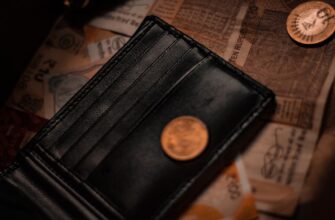- Why Anonymizing Hacked Funds Is Critical for Your Security
- Step-by-Step: How to Anonymize Funds Stolen by Hackers
- Step 1: Confirm the Hack and Secure Remaining Assets
- Step 2: Transfer Funds to a Disposable Wallet
- Step 3: Anonymize Using Privacy Tools (Proceed with Caution)
- Step 4: Convert to Fiat or Clean Assets
- Step 5: Document Everything and Seek Legal Advice
- Essential Precautions When Anonymizing Stolen Funds
- FAQ: Anonymizing Funds from Hackers Safely
- Is anonymizing stolen crypto legal?
- Can hackers trace anonymized funds?
- What if I can’t access the stolen funds?
- Are decentralized exchanges (DEXs) safe for anonymization?
- How long does fund anonymization take?
- Conclusion: Reclaim Control Responsibly
Why Anonymizing Hacked Funds Is Critical for Your Security
Discovering your funds were stolen by hackers is terrifying. Beyond financial loss, exposed transactions can lead to further targeting or legal complications. Anonymizing these funds—making them untraceable—is a vital step to reclaim control and prevent recurring attacks. This guide walks you through a legal, ethical process to anonymize stolen cryptocurrency step by step, prioritizing security and compliance. Always consult legal professionals before proceeding, as regulations vary globally.
Step-by-Step: How to Anonymize Funds Stolen by Hackers
Follow these steps meticulously to anonymize compromised assets while minimizing risks. This process assumes you’ve already reported the theft to authorities.
Step 1: Confirm the Hack and Secure Remaining Assets
- Verify the breach: Check transaction histories and wallet logs to confirm unauthorized access.
- Isolate threats: Disconnect compromised devices, change all passwords, and enable 2FA.
- Freeze vulnerable accounts: Contact exchanges or banks to halt suspicious activity.
Step 2: Transfer Funds to a Disposable Wallet
- Create a new, secure wallet (e.g., hardware wallet like Ledger) on an uncompromised device.
- Move stolen crypto to this wallet via a small test transaction first. Avoid centralized exchanges—they require KYC and can flag stolen funds.
Step 3: Anonymize Using Privacy Tools (Proceed with Caution)
- Option A: Privacy Coins
- Convert funds to privacy-focused coins like Monero (XMR) or Zcash (ZEC) via decentralized exchanges (e.g., Changelly).
- These coins obscure transaction details by default, breaking the blockchain trail.
- Option B: Coin Mixers (Tumblers)
- Use reputable mixers like Wasabi Wallet (for Bitcoin) or Tornado Cash (for Ethereum)—research legality in your jurisdiction first.
- Mixers pool your crypto with others, redistributing anonymized amounts to new addresses.
Step 4: Convert to Fiat or Clean Assets
- Swap anonymized crypto for cash via peer-to-peer (P2P) platforms like LocalMonero or non-KYC exchanges.
- Alternatively, convert to stablecoins and transfer to a new, KYC-compliant exchange account unrelated to the hack.
Step 5: Document Everything and Seek Legal Advice
- Keep records of all transactions, hacker evidence, and communications with authorities.
- Consult a lawyer specializing in cybercrime to ensure compliance with anti-money laundering (AML) laws.
Essential Precautions When Anonymizing Stolen Funds
- Avoid Illicit Services: Shady mixers or “recovery scammers” often steal funds—stick to audited, open-source tools.
- Prioritize Privacy: Use VPNs, Tor browsers, and disposable emails during the process to hide your IP.
- Tax Implications: Report recovered funds to tax authorities; anonymization doesn’t exempt legal obligations.
FAQ: Anonymizing Funds from Hackers Safely
Is anonymizing stolen crypto legal?
It depends on jurisdiction and intent. While protecting assets isn’t illegal, using mixers for money laundering is a crime. Always work with law enforcement and legal counsel.
Can hackers trace anonymized funds?
Properly anonymized funds via privacy coins or mixers are extremely difficult to trace. However, flaws in execution (e.g., reusing addresses) can leave trails.
What if I can’t access the stolen funds?
If hackers moved assets beyond your reach, focus on securing other accounts and cooperating with cybercrime units. Recovery services are often scams.
Are decentralized exchanges (DEXs) safe for anonymization?
DEXs like Uniswap don’t require KYC, making them useful for initial conversions. However, on-chain activity is public—pair with privacy tools for full anonymity.
How long does fund anonymization take?
With prepared wallets, it can take minutes for transfers. Mixing services may require hours or days depending on network congestion.
Conclusion: Reclaim Control Responsibly
Anonymizing funds from hackers is a defensive measure, not a shortcut. By following these steps—confirming the breach, using privacy tools cautiously, and consulting experts—you can shield your assets from further exploitation. Remember: Prevention beats recovery. Use multisig wallets, cold storage, and regular audits to avoid future breaches. Stay vigilant, stay legal, and prioritize long-term security.








